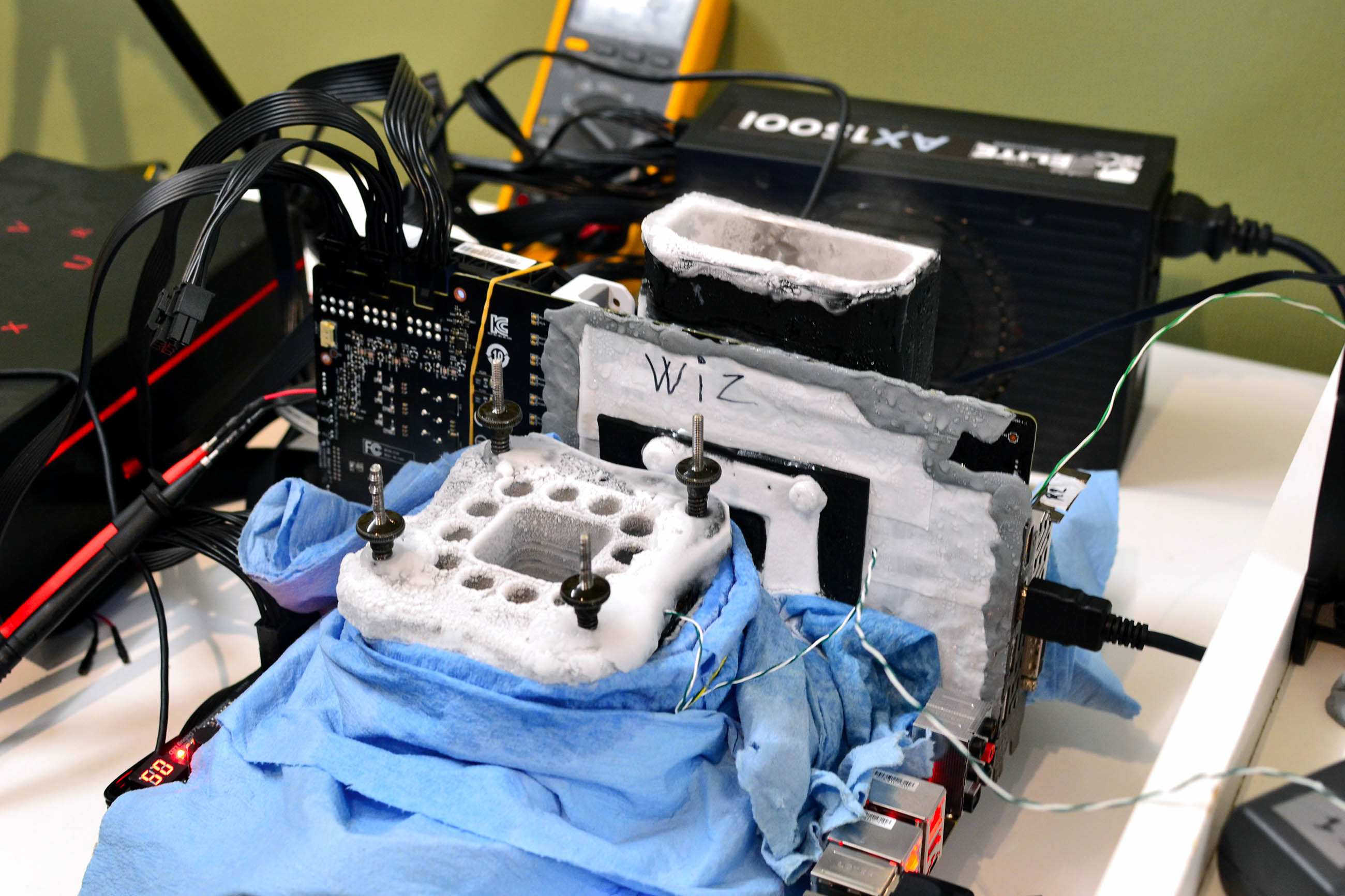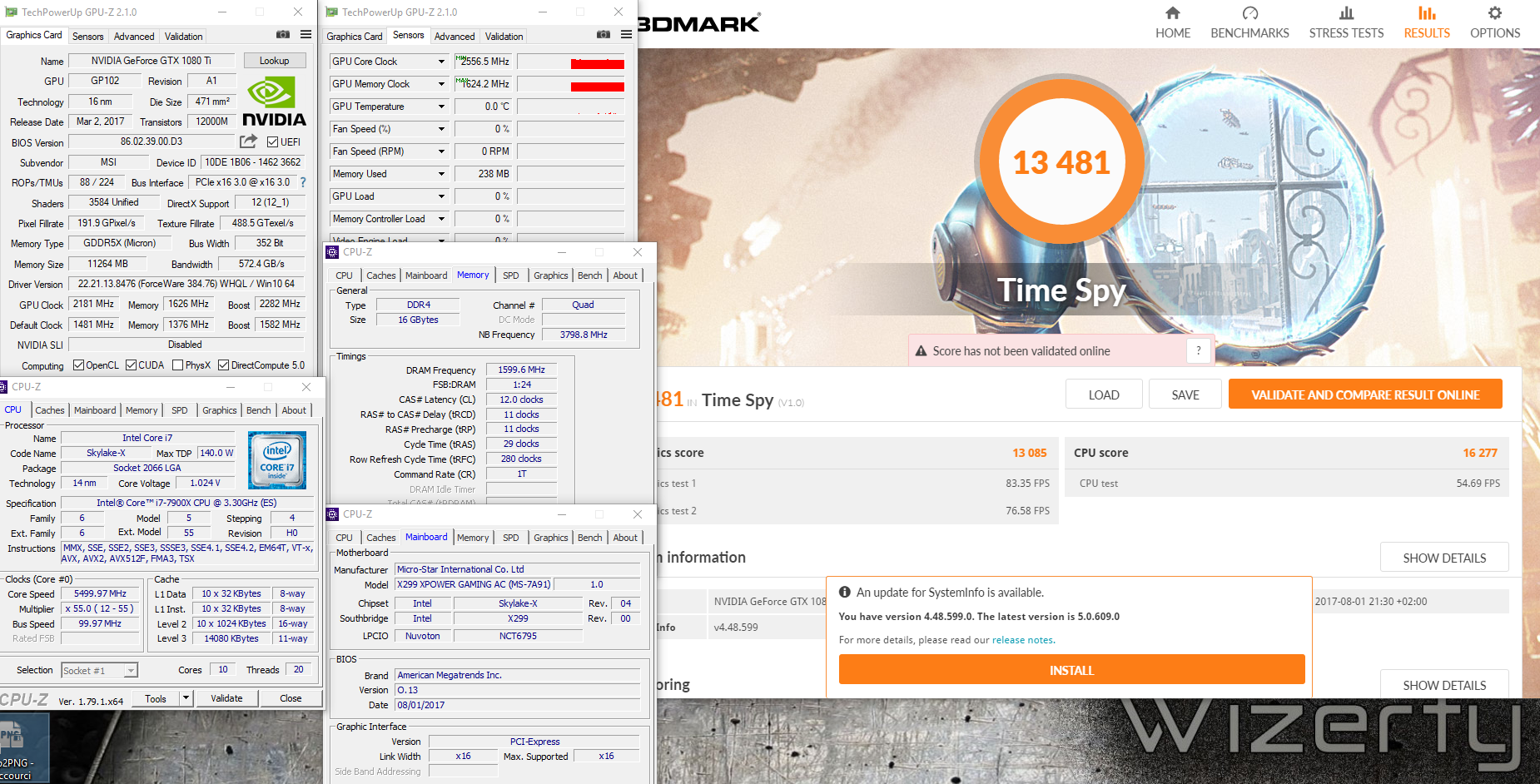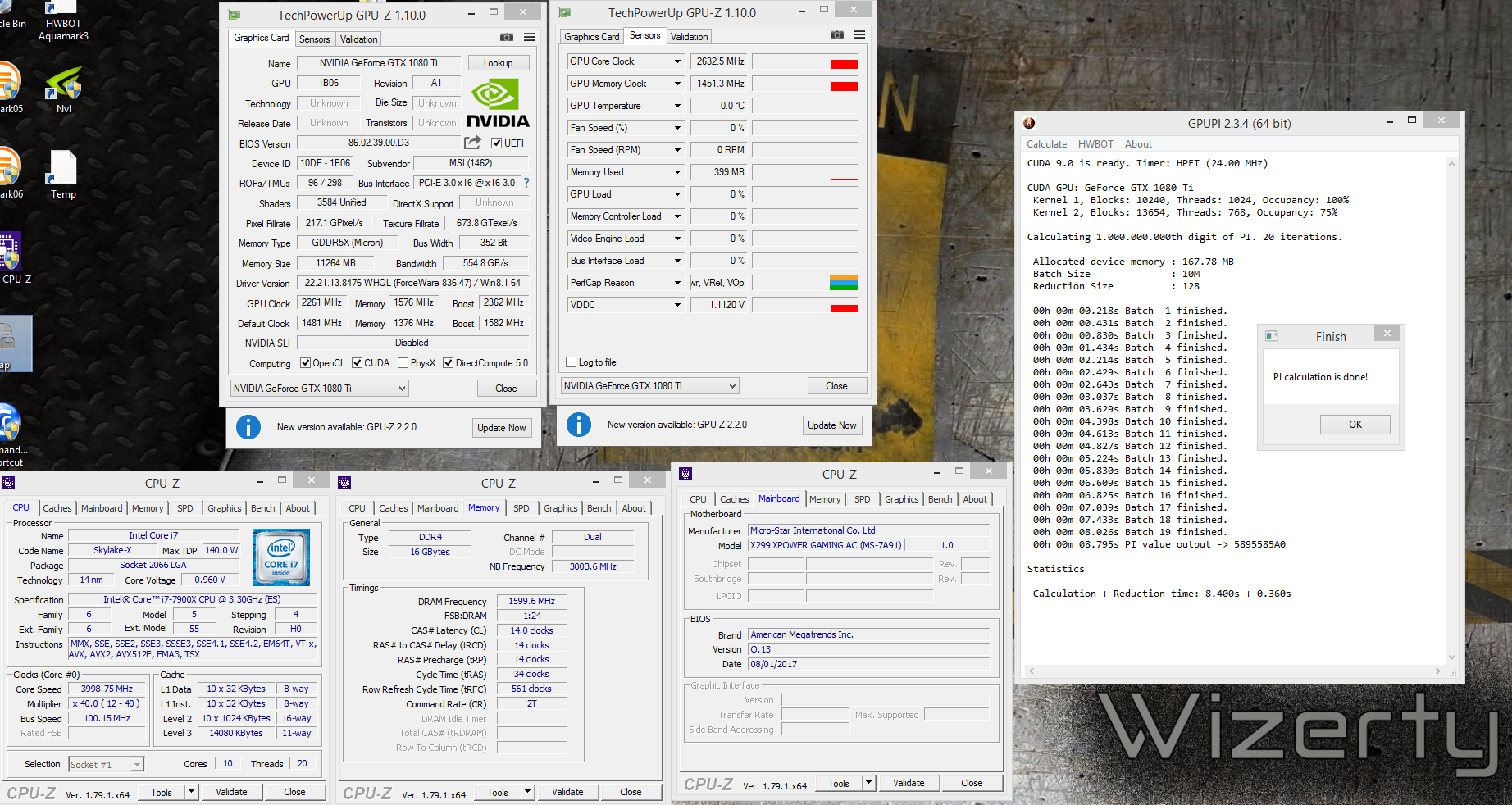GeForce GTX 1080 Ti At 2.5 GHz+: Overclocking On Air, Water, And LN2
Performance Benchmarks Under LN2
Once we finished with our preparation and sorting, we only had a little LN2 left. That was enough to run a handful of benchmarks:
The first test was Fire Strike Extreme. We took advantage of the card's warm-up phase to run this one, achieving a score of 18,034 points in the graphics test with the GPU at 2518 MHz and the RAM at 1624 MHz.
For the next test, we also overclocked our Core i9-7900X on an MSI X299 Xpower Gaming AC motherboard in order to maximize the overall score.
Similar to our Fire Strike test, we were able to stabilize the GDDR5X at 1624 MHz. In truth, this value was used because it's the highest one that Afterburner can apply. It's possible that the card is at its limit, but MSI hasn't yet responded to our request for an extended frequency range.
As for the GPU, we tried applying a new thermal paste to lessen the effects of degradation we were seeing. But the result was disappointing. Even worse, we were not able to reproduce the 2570 MHz seen during our ranking phase. Instead, we hit a ceiling of 2556 MHz. That's still pretty good. As of this writing, only two other GeForce GTX 1080 Tis in the world have done better.
This test allowed us to push up to 2632 MHz. The CPU and memory didn't factor into our score this time. Instead, their frequencies were lowered in order to conserve our precious liquid nitrogen.
MORE Best Graphics Cards
Get Tom's Hardware's best news and in-depth reviews, straight to your inbox.
MORE: Overclocking GeForce GTX 1080 Ti To 2.1 GHz Using Water
MORE: How To: Optimizing Your Graphics Card's Cooling
Current page: Performance Benchmarks Under LN2
Prev Page Overclocking GP102 Under LN2 Next Page Conclusion-
blppt Probably the EVGA FTW3 ELITE GAMING or Kingpin model (also perpetually unavailable). Thats all I can think of off the top of my head.Reply -
reimanrules Sorry if I come up as ignorant, can you tell me what PCA stands for? Thanks in advance.Reply -
Defekter_Engel I wonder if anyone has tried a closed loop LN2 circuit. Would keep it from changing state from liquid to gas. Downside being it would take a butt-ton of equipment.Reply -
TJ Hooker @reimanrules pretty sure PCA = printed circuit assemblyReply
@Defekter_Engel it's the boiling (i.e. changing state from liquid to gas) of the LN2 that keeps it cold. Also, trying to keep it liquid would result in extreme pressure building up. -
Tim_124 Vanilla 1080ti’s get to 2050mhz under air, and 2050-2100mhz under water. I’ve read reviews of lots of top of the line 1080ti’s and have yet to see any cards improve on stock performance. Unless the acoustics of the cooling solution are superior there is absolutely no benefit to any of these high end cards. GP102 is the undisputed king of GPU’s, but it doesn’t appear to benefit at all from enhanced power delivery systems. Not worth spending any money on them.Reply -
nitrium Reply
Wouldn't work. Liquid nitrogen is only cold when it is allowed to evaporate. In a closed loop it actually wouldn't be cold anymore at all - it would simply be at room temperature but with 2200 psi of pressure. Water is far more effective at transferring heat than liquefied (under pressure) nitrogen gas.20443483 said:I wonder if anyone has tried a closed loop LN2 circuit. Would keep it from changing state from liquid to gas. Downside being it would take a butt-ton of equipment.
-
derekullo Evaporation is endothermic.Reply
Condensation is exothermic.
Staying the same is thermally neutral.
Condensing room temperature nitrogen gas to liquid would be an exothermic phase change. (This is what you pay for when buying LN2. Nitrogen gas itself is quite literally all around you, although with some "impurities" like oxygen.)
Pouring your liquid LN2 into an area with standard atmospheric pressure allows the liquid to evaporate and expand.
The ideal gas law states that when a gas expands it also becomes cooler.
On the opposing side when a gas is compressed it becomes hotter.
(This heat is what supplies our sun with the temperatures necessary for nuclear fusion.) -
redgarl Reply20443319 said:Probably the EVGA FTW3 ELITE GAMING or Kingpin model (also perpetually unavailable). Thats all I can think of off the top of my head.
My 1080 FTW died twice in 10 months... these were two brand new cards. Hell no, EVGA PCB quality is far from MSI.
-
derekullo If you want to talk theory then you want a liquid with a super high specific heat or heat capacity that is also liquid at common temperatures to avoid having to deal with internal pressure.Reply
When talking about closed loops you always need a radiator or some device to remove heat from the system.
LN2 in the conventional sense does not need a radiator due to it achieving its heat removing properties by evaporation.
https://en.wikipedia.org/wiki/Heat_capacity#Table_of_specific_heat_capacities
https://www.aiche.org/resources/publications/cep/2015/september/cool-down-liquid-nitrogen
Specific heat is the ability of a material to store thermal energy
Water: 4.18
Ammonia: 4.7
Hydrogen gas: 14.3
Liquid Nitrogen: 1.08 at 1 atmospheric pressure
Technically Ammonia has a higher heat capacity than water, but due to ammonia boiling at −33.34 °C you would need to keep the temperature of your closed loop below that which is achievable.
The issue with ammonia comes with ammonia's acidity slowly corroding most metals along with its toxicity to most forms of life.
Depending on how much ammonia is in your loop it could be highly hazardous if your house were to lose power and your loop was unable to sustain the pressure of all the ammonia flashing to gas.
Hence why consumers don't use ammonia for cooling.
(Industry might for some obscure purpose, but other chemicals are much safer)
As for hydrogen:
It requires a massive amount of energy to make it a liquid, -252°C or 21 kelvin.
This means super insulting your pipes as well.
We can't have room temperature air causing convection/conduction to occur against our 21 kelvin pipes.
On top of that any leaks you might have require the evacuation of the neighborhood.
I couldn't find the specific heat of liquid hydrogen, but it's best to not try to find it lol.
Now we full circle back to liquid nitrogen;
Cooling nitrogen to its liquid state, -196 °C or 63 Kelvin, requires a lot of energy.
We again need to super insulate the pipes against heat transfer.
Liquid nitrogen also has a specific heat 1/4 that of water.
This means that it will heat up much faster than water causing your radiator to work even harder to cool it back down to a liquid state.
You can make a closed liquid nitrogen loop with a highly specialized radiator such as one implementing a peltier heat pump, but the thermal properties of liquid nitrogen make it highly inefficient.
This makes liquid nitrogen only suitable for short term record-breaking through its heat transfer through evaporation




